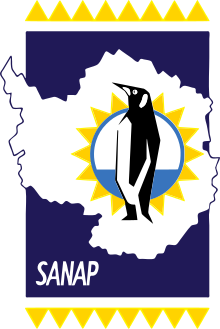 | |
| Formation | 1959 |
|---|---|
| Purpose | To safeguard the environment of the Antarctic and Southern Ocean and protecting the integrity of ecosystems, both marine and terrestrial, in the region. |
| Location | |
Parent organisation | Department of Science and Innovation |
| Website | https://www.sanap.ac.za/ |
The South African National Antarctic Programme (or SANAP) is the South African government's programme for research in the Antarctic and Subantarctic. Three research stations fall under this programme: the Antarctica research station SANAE IV, and one station each on the subantarctic islands Gough Island and Marion Island. These stations are managed and administered by the Directorate: Antarctic and Islands of the Department of Environmental Affairs. Borga Base was also operated by SANAP from 1969 to 1976.
Contents
The mission of the South African National Antarctic Programme is to increase understanding of the natural environment and life in the Antarctic and Southern Ocean through appropriate science and technology.
South Africa is one of the original signatory states of the Antarctic Treaty. [1]